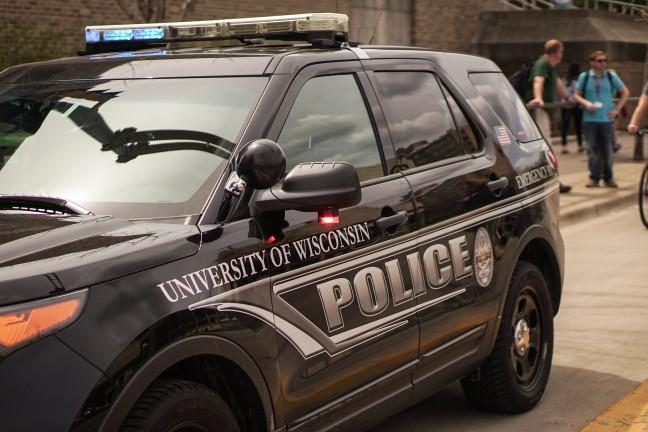Along with many other police departments across the country, the Madison Police Department and the University of Wisconsin Police Department joined in the 30×30 Pledge dedicated to bringing more women into law enforcement.
The 30×30 Pledge started as a low-cost way to try to get more women police officers onto police forces. When departments accept the pledge, they are aiming for women to represent 30% of their police recruiting classes by 2030.
UWPD Director of Recruitment, Inclusion and Diversity Louis Macias says the 30×30 Pledge is something he was excited to see UWPD take part in, especially because they already are so close to attaining this goal.
“I felt like we were a natural fit to be a part of this,” Macias said. “Not only is it a worthy initiative, but the department has a long legacy of women in leadership.”
In addition to this, Macias says UWPD is known for having women in high ranks of the department.
Within UWPD, women are represented at every level of the sworn ranks, Macias says. In every rank from patrol officer up to the police chief, each of those ranks are represented by women, including within specialty units.
“It’s definitely a point of pride for the department,” Macias said. “I think it really speaks to the department’s history over the last three decades of leadership in this area.”
Macias said the UWPD force is already made up of about 25% women, in comparison to the national average of 14%.
UWPD Lieutenant Cherise Caradine said the national push is to not only bring more women into law enforcement but also to diversify beyond that.
“This in my 19th year in the department,” Caradine said. “In our agency, along with our neighboring agencies, there’s always been a drive to diversify our departments in our sworn and nonsworn divisions.”
Caradine expressed the importance of police departments to be representative of the population and the specific community they are serving.
UWPD responds to backlash following ‘thin blue line’ flag in Twitter post
When UWPD is hiring new recruits, Caradine said as with any other field of work, it is important to look at the experiences that person has.
“I can tell you from my personal experience coming on at UWPD there’s always been a sense of equality within our ranks,” Caradine said. “Maybe that’s just because of the type of people that we hire, maybe it’s because we’ve had two women chiefs running our agency.”
Caradine said when responding to a call and working with victims, if an officer is able to relate to what the person is going through or who the person is, it makes a big difference.
That responding officer can greater understand what the person is going through and provide accurate resources for them if they can relate to the victim on a personal level, Caradine explained. Whether it’s a large crisis or just a routine small issue, the ability to relate can make all the difference.
“It’s interesting the way that we can look at a lot of the dimensions of diversity — the ways that different identities can really problem solve in different ways that oftentimes are uniquely effective,” Macias said.
The work to diversify the police force starts with recruitment, according to Caradine. Police departments need to actively go out and find people interested in a career of service, and they also need to provide a strong example of what that means through their current employees.
Macias added his current position with UWPD was added in 2019 to address the ongoing need for diversity.
“In fact, one of the things our chief says, rightfully so, is that in terms of a non-sworn person, doing this kind of work around hiring culture and climate in a police department, is very rare,” Macias said.
As UWPD was working to create Macias’ position, they could not find an adequate example from across the country of what they wanted to include in the position description, Macias said.
In addition to this, UWPD redesigned their hiring process to build clarity and intentionality in their processes, according to Macias. In setting hiring standards, Macias likes to set clear goals for what success looks like in policing outcomes.
“One of the things I’m really proud of during my tenure at the department is that last year despite everything, we ran two police processes, and they were larger in terms of applicant volume and more diverse than any we had had in the three years before that,” Macias said.
In the past, Caradine believes police work was always labeled as a male-dominant profession, as with many other professions.
But in more recent times, Caradine says that mindset was proven incorrect, and many professions are getting better at showing all groups the opportunities available to them.
“There’s probably still a few ‘first’ things that are out there. I was our first female dog handler, and my dog was a female, so we were the first all-female team with our agency,” Caradine said. “We now know that even any of our specialty-type jobs that are out there, they are achievable for anyone and any woman within our agency.”


















